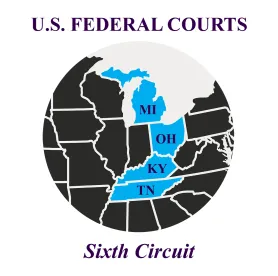The Sixth Circuit has a longstanding reputation for having lots of dissents and concurrences. We analyzed the last three years of opinions and found that the Sixth and D.C. Circuit have about twice the average number of dissents and concurrences opinions per case than other circuits. Partisan and ideological differences account for some dissents, in addition to opinions that reframe or narrow the majority’s opinion to weaken its holding. But as separate opinions have become more frequent, there appears to be less friction and more policy-focused and academic dialogue about the development of the law. We’ve also seen a rise in concurrences that give guidance on the resolution of issues not reached by the majority, or necessary to the outcome, and other helpful discussions that may be best left out of precedential opinions.
Indicative of this perceived decline in partisan dissents, despite an overall rise in numbers, is the political make-up of the dissenters. The Sixth Circuit has long had more Republican-appointed judges, and when we looked at dissents in 2011, Democratic-appointed judges Moore and Clay dissented three or four times more often than Republican-appointed judges. Our new analysis still places Judge Moore at the forefront of the dissenters, but Judge White is next, then Judge Clay, and then Judges Griffin and Thapar. Judge Larsen writes the least dissents of anyone. And the overall differences in dissenting rates between Democrat- and Republican-appointed judges is not nearly as stark as in 2011, which is a good sign. Panel composition will always be predictive, but we can hope it will not be quite so determinative as in the past.
Looking at other circuits, the Second and Third Circuits had the least number of dissents per opinion, about a third as many as the Sixth and D.C. Circuits. Funny enough, those two circuits, together with the Sixth Circuit, issue far more signed opinions than any other circuit—more than even the Ninth Circuit, though it has twice the number of judges. As a result, Sixth Circuit judges issue both an unusually large number of signed opinions and an unusually large number of separate opinions while still being the third-fastest circuit to decide appeals. Though we haven’t looked at the length of the opinions, the circuit may have a claim to have the fastest-writing federal judges.
Finally, we should mention that no circuit judge dissents as often as Supreme Court judges. The Supreme Court only manages to be unanimous about 30% of the time, which is far less unanimity than the published decisions of any circuit.




 />i
/>i


